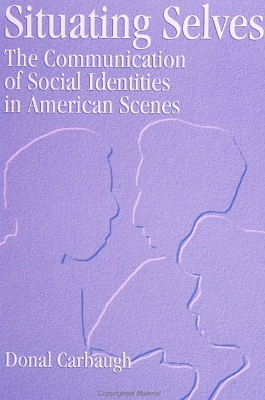SUNY series, Human Communication Processes
1 total work
Theories of identity have been built largely upon biological, psychological, sociological, and anthropological grounds. Missing from each of these, yet of potential relevance to them all, is a community theory of identity such as the one developed here. Situating Selves presents studies of five American scenes, focusing on the ways social identities are communicatively crafted. Based on 15 years of fieldwork, the book presents fine-grained analyses of the playful self during sporting events (with special attention given to crowd activities at college basketball games), the working self in a television company, the marital self in weddings and marriages, the gendered self in television "talk shows," and conflicted selves during a community's hotly contested land-use controversy.
Carbaugh shows how listening to communication in cultural scenes like these can help reveal how deeply identity is situated in various communicative practices. These include a ritual of play, symbolic allusions to different classes of people, a diversity in the forms of names used upon marriage, the play between genders and gender-neutral language, and the relationship between language, nature, community, and politics. Concluding commentary links the studies to the contemporary American scene, and shows how the focus on communication can integrate into community living both shared and separate identities. Emerging from these studies is a view of communication as not only a situated expression of selves in American scenes, but also an active contributor in constituting those very identities and scenes.
Carbaugh shows how listening to communication in cultural scenes like these can help reveal how deeply identity is situated in various communicative practices. These include a ritual of play, symbolic allusions to different classes of people, a diversity in the forms of names used upon marriage, the play between genders and gender-neutral language, and the relationship between language, nature, community, and politics. Concluding commentary links the studies to the contemporary American scene, and shows how the focus on communication can integrate into community living both shared and separate identities. Emerging from these studies is a view of communication as not only a situated expression of selves in American scenes, but also an active contributor in constituting those very identities and scenes.
